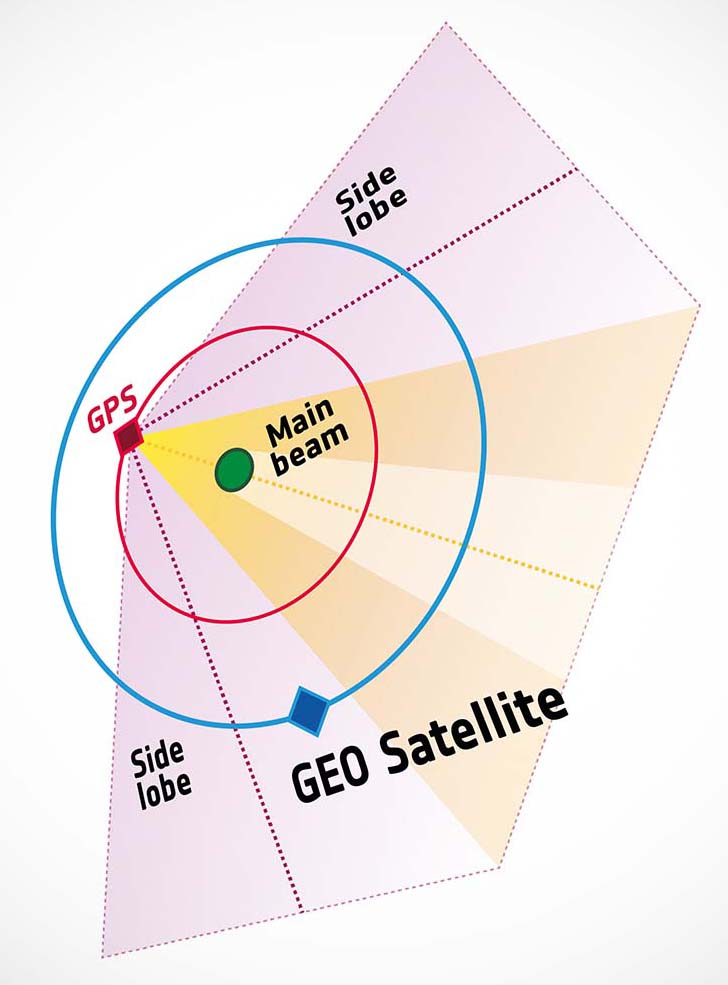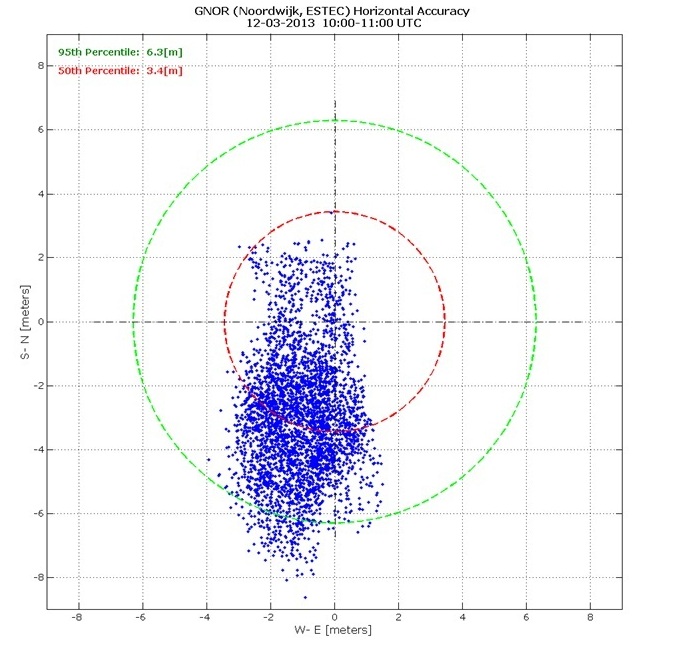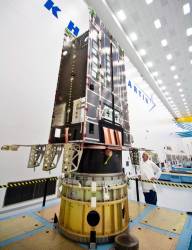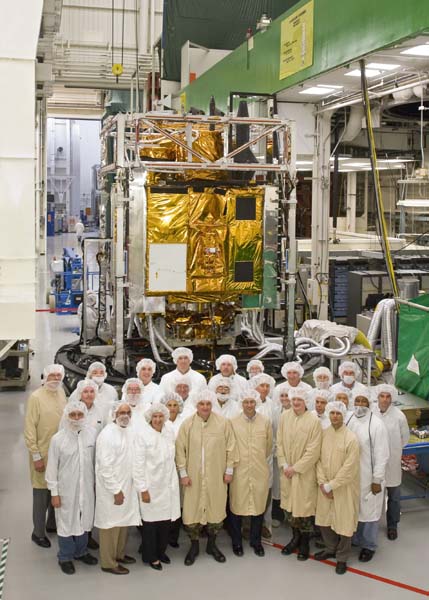NavtechGPS Spring GNSS Training


NavtechGPS Spring GNSS Training 2014 will take place April 1-4, at Loews Annapolis Hotel in Annapolis, Maryland, USA.
Register by February 15 and get a $100 Discount for 4-Day Courses.
By Inside GNSS

NavtechGPS Spring GNSS Training 2014 will take place April 1-4, at Loews Annapolis Hotel in Annapolis, Maryland, USA.
Register by February 15 and get a $100 Discount for 4-Day Courses.
By Inside GNSS One of 12 magnetograms recorded at Greenwich Observatory during the Great Geomagnetic Storm of 1859
One of 12 magnetograms recorded at Greenwich Observatory during the Great Geomagnetic Storm of 1859 1996 soccer game in the Midwest, (Rick Dikeman image)
1996 soccer game in the Midwest, (Rick Dikeman image)
 Nouméa ground station after the flood
Nouméa ground station after the flood A pencil and a coffee cup show the size of NASA’s teeny tiny PhoneSat
A pencil and a coffee cup show the size of NASA’s teeny tiny PhoneSat Bonus Hotspot: Naro Tartaruga AUV
Bonus Hotspot: Naro Tartaruga AUV
 Pacific lamprey spawning (photo by Jeremy Monroe, Fresh Waters Illustrated)
Pacific lamprey spawning (photo by Jeremy Monroe, Fresh Waters Illustrated) “Return of the Bucentaurn to the Molo on Ascension Day”, by (Giovanni Antonio Canal) Canaletto
“Return of the Bucentaurn to the Molo on Ascension Day”, by (Giovanni Antonio Canal) Canaletto The U.S. Naval Observatory Alternate Master Clock at 2nd Space Operations Squadron, Schriever AFB in Colorado. This photo was taken in January, 2006 during the addition of a leap second. The USNO master clocks control GPS timing. They are accurate to within one second every 20 million years (Satellites are so picky! Humans, on the other hand, just want to know if we’re too late for lunch) USAF photo by A1C Jason Ridder.
The U.S. Naval Observatory Alternate Master Clock at 2nd Space Operations Squadron, Schriever AFB in Colorado. This photo was taken in January, 2006 during the addition of a leap second. The USNO master clocks control GPS timing. They are accurate to within one second every 20 million years (Satellites are so picky! Humans, on the other hand, just want to know if we’re too late for lunch) USAF photo by A1C Jason Ridder.  Detail of Compass/ BeiDou2 system diagram
Detail of Compass/ BeiDou2 system diagram Hotspot 6: Beluga A300 600ST
Hotspot 6: Beluga A300 600ST

1. E-CROWDSHIPPING
Palo Alto, California USA

[Updated June 3, 2013] With the budget vise tightening, top Pentagon managers are readying some potentially dramatic changes to the GPS constellation — changes that promise to lower both the cost of the satellites and the expense of putting them into orbit.
The first changes would be subtle and are linked to buying the next block of GPS III satellites — a decision that sources confirm will be made by the end of September.
By Dee Ann Divis GPS signal side lobes.
GPS signal side lobes. When the European Space Agency launched its Galileo In-Orbit Validation Element-A (GIOVE-A) satellite in 2005, its main mission was to transmit Galileo test signals that secured the system’s frequencies, evaluate hardware under space environmental conditions, and so forth.
By Inside GNSSA redesign of the GPS satellites under development by Lockheed Martin will add a signal waveform generator, search and rescue payload, laser retroreflector array (LRA), and dual-launch capability beginning with Space Vehicle 9 (SV09).
By Inside GNSS Skyplot of Galileo IOV satellite locations used in Septentrio position determination.
Skyplot of Galileo IOV satellite locations used in Septentrio position determination.Two European organizations announced successful positioning results yesterday (March 12, 2013) using signals from the four Galileo in-orbit validation (IOV) satellites.
The NavSAS group of Politecnico di Torino and Instituto Superiore Mario Boella in Turin, Italy, obtained its first Galileo autonomous position using signals from the Protoflight Model (PFM) and three Flight Model space vehicles (FM2, FM3, FM4), which have started transmitting valid navigation messages.
By Inside GNSS Measurements of individual Galileo horizontal position fixes performed for the first time using the four Galileo satellites in orbit plus the worldwide ground system between 1000 and 11:00 CET on Tuesday 12 March 2013, showing an overall horizontal accuracy over ESTEC in Noordwijk, the Netherlands, of 6.3 meters. ESA figure
Measurements of individual Galileo horizontal position fixes performed for the first time using the four Galileo satellites in orbit plus the worldwide ground system between 1000 and 11:00 CET on Tuesday 12 March 2013, showing an overall horizontal accuracy over ESTEC in Noordwijk, the Netherlands, of 6.3 meters. ESA figureThe European Space Agency (ESA) has announced a key milestone today (March 12, 2013) in the development of Europe’s GNSS program: the first determination of a ground location using the four Galileo satellites currently in orbit together with the system’s ground infrastructure.
This fundamental step confirms the Galileo system works as planned, according to ESA scientists.
By Inside GNSS The core structure of the GPS III Non-Flight Satellite Testbed (GNST) stands in Lockheed Martin’s GPS III Processing Facility. Lockheed Martin photo
The core structure of the GPS III Non-Flight Satellite Testbed (GNST) stands in Lockheed Martin’s GPS III Processing Facility. Lockheed Martin photoWell, the lights work. So far, so good.
The Lockheed Martin team developing the U.S. Air Force’s next-generation GPS III satellites has turned on power to the system module of the program’s first spacecraft, designated GPS III Space Vehicle One (SV-1).
According to the prime contractor, the achievement is a key indication that the team is on track to deliver the first satellite for launch availability next year, although the actual first launch will probably take place in 2015.
By Inside GNSS Boeing engineers with GPS Block IIF on production line. Boeing photo
Boeing engineers with GPS Block IIF on production line. Boeing photoThe U.S. Air Force has awarded The Boeing Company a $51 million to continue modernizing the GPS satellite constellation for up to five more years. The contract covers GPS IIF satellite shipment to the launch site in Florida, pre-launch preparation, post-launch checkout, handover, and on-orbit support. It has an initial one-year term with four one-year options.
By Inside GNSSThe Air Force Research Laboratory (AFRL) has selected Surrey Satellite Technology US LLC (SST-US), of Englewood, Colorado, to investigate cost reduction and augmentation of the current GPS constellation through the application of a small satellite approach.
AFRL has contracted with SST-US to identify and analyze how small satellites can improve aspects of GPS system performance, such as accuracy, coverage, and robustness at costs far below those of past procurements.
By Inside GNSS
The U.S. Air Force Space Command has awarded Lockheed Martin Information Systems & Global Solutions–Defense a $100 million contract to upport the GPS ground control segment. The contract’s period of performance is from January 2013 through June 2019.
By Inside GNSS GIOVE-A mated with Fregat launcher upper stage. ESA photo
GIOVE-A mated with Fregat launcher upper stage. ESA photoAn experimental GPS receiver, built by Surrey Satellite Technology Limited (SSTL), has successfully achieved a GPS position fix at a 23,300-kilometer altitude — the first position fix above the GPS constellation on a civilian satellite, according to the company.
SSTL’s SGR-GEO receiver is collecting data that could help the company to develop a receiver to navigate spacecraft in geostationary Earth orbit (GEO) or even in deep space.
By Inside GNSS
The sixth conference on Recent Advances in Space Technology (RAST 2013) will take place at the Harbiye Military Museum close to the Istanbul Convention Center (ICEC) in downtown Istanbul, Turkey. It will run from June 12 through June 14.
By Inside GNSS